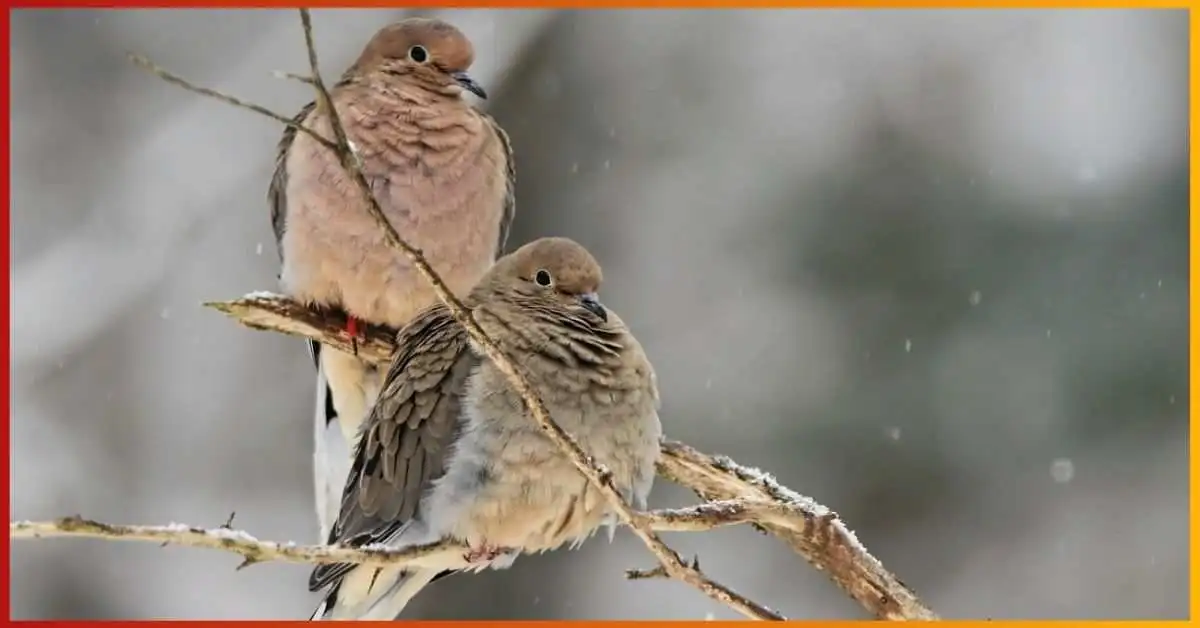
Mourning doves are one of the most widespread bird species in North America. They are found in a variety of habitats, including open fields, woodlands, and urban areas. Mourning doves are known for their gentle appearance and mournful call.
If you are new to birdwatching, you may be wondering how to identify mourning doves. In this blog post, we will provide a complete guide on how to identify these beautiful birds.
The Coosmith Up Close
Our feathered friend, the mourning dove is a regular visitor in North America. It is not very hard to spot them. You can easily identify them by their unique appearance and distinctive coos. So, let’s break down what makes them stand out in the avian world.
Dressed in Style
Imagine a bird that’s dressed in shades of soft grayish-brown with a hint of blush on its chest. It is like they’re wearing a fashionable neutral outfit!
But wait, there’s more to their fashion sense. Look closer, and you’ll see a stylish teardrop-shaped mark beneath their eyes. It’s the perfect accessory for any dove.
Related: Discover 3 Types of Doves in Massachusetts (2023)
Tail’s Tale
These birds are all about making a statement, and their long, elegant tails do just that. Their tails are like a work of art, with white edges and a dark band at the tip. It’s like they have a built-in evening gown that’s always ready for a night out!
Musical Masters
The Coosmith is not just a looker but also a talented musician. When they’re in the mood, they serenade us with a gentle, soul-soothing “coo-OO-oo-oo” melody. It’s the perfect soundtrack for a lazy afternoon.
Flying in Style
When they take to the skies, it’s like watching a masterclass in graceful flight. Their direct, swift wingbeats create a soft whistling sound, leaving you in awe of their elegance.
Related: Discover 10 Pigeons & Doves in Florida
Neighborhood Vibes
You’ll often find Coosmiths hanging out on telephone wires, fences, and trees. It’s like they’re the cool, laid-back neighbors who always have time for a chat.
Plus, they’re ground feeders, so they’re your garden’s clean-up crew, foraging for seeds. They’re the eco-friendly residents of your local neighborhood.
Conservation Heroes
The Coosmiths aren’t just here for a good time; they’re here for a long time. They’re not endangered and have a stable population.
Many places have regulations in place to protect them because they’re game birds. They provide the perfect opportunity for regulated hunting, making them even more special.
Conclusion
Mourning doves are easy to identify by their appearance, behavior, and sound. If you see a medium-sized bird with a slender body, long tail, and small head, and it has black spots on its wings and black-bordered white tips on its tail feathers, then it is likely a mourning dove. Listen for its soft, mournful call to confirm your identification.


